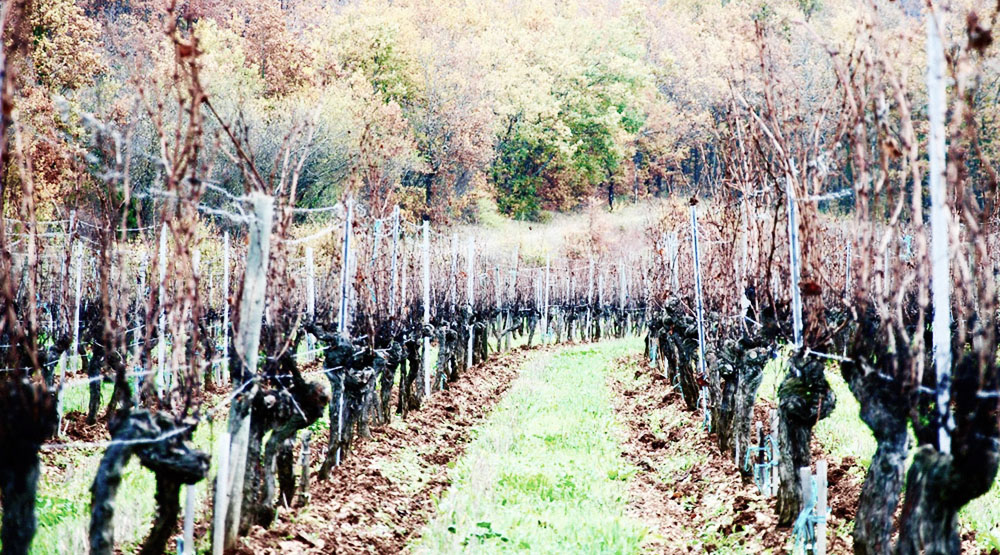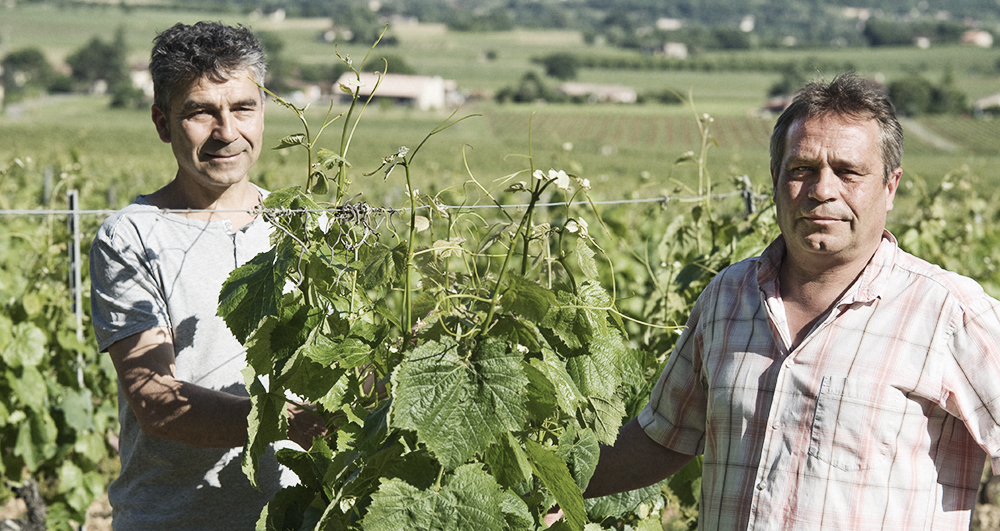
Some years ago, the wine producers of Cahors woke up to some bad news. They were the Tortoise in what seemed to be “The Tortoise and The Hare” story with a different ending. The hare in question was Argentinian and it had just zoomed past them, fuelled by Malbec, an alias of the côt grape the tortoise had been growing for ages under the local name Auxerrois.
Cahors had long been famous for its “black wine,” a sturdy, age-worthy and very tannic red. Its style has evolved into something more civilized through the addition of Merlot and a bit of modern winemaking, but it is still quite different from the south-American interpretation, which is velvety, loaded with red fruit flavours and spicy oak.
Cahors is not all black wine, but nobody seemed to know that outside the village. The Cadurciens (pronounced ka-dur-see-n, that’s how they call themselves) realized that their image was in need of revamping or the hare would really win the race. Their first reaction was to say “We are Malbec too” and to list the varietal on entry-level wine labels. But this couldn’t be done for their more prestigious cuvées, since the French tradition touts the terroir more than the grape variety, and they did not want to lose that heritage.
How then could the tortoise inform consumers that its wine is also of an approachable, ready-to-drink style, and not just black wine? Interestingly, the solution comes from that very terroir.
Jérémie Arnaud, director of marketing at the Union Interprofessionnelle, explains that Cahors’ two styles naturally emerge from different areas. The Lot River wanders through the vineyard, and its shores are covered with alluvial deposits because the body of water used to be much larger. This sloping, rich soil is arranged in terrasses where the vines give full-bodied, generous wines. Higher up and on the plateau, at around 300 metres, the soil is predominantly limestone and much poorer. Called causse, this part of the vineyard generates a more readily approachable style.
“Eureka!,” said the tortoise, recognizing that these two words would allow Cahors to differentiate its different styles of wine while also respecting the tradition that terroir matters most. Already, the words “terrasses” and “causse” have started to appear on labels, in bottle text or on their own. Combined with price, they are a good indication of what you will find in your glass.
Terassess
Domaine Cosse-Maisonneuve Le Combal 2012 ($19)
Dark with purplish rim. Oaky nose, earthy. The fruit is more present on the palate, it makes the firm tannic backbone feel almost velvety. Acidity is also felt, especially in the slightly edgy finish.
Domaine Cosse-Maisonneuve Les Laquets 2011 ($42)
Dark colour. Red berries, herbs and a fair amount of oak. Medium- to full-bodied, its balance is its main quality on the palate. Nothing really stands out, but everything is in the right proportions, resulting in a tight, satisfying finish.
Clos La Coutale 2014 ($14)
The addition of Merlot (20%) softens this bargain-priced example, which is less full-bodied than most others from the terraces. It shows a nice balance between the fruit, the alcohol and the tannins, only the acidity is maybe a little too much to be perfect.
Château de Gaudou Tradition 2014 ($16)
Dark ruby. Black berries and blueberry notes with only hints of oak despite 9 months aging in large casks. Medium- to full-bodied, firm middle palate, slightly tannic and energized by acidity. Tight finish. 80% Malbec plus Merlot and 5% Tannat.
Château de Gaudou Renaissance 2012 ($22)
Dark ruby. Gorgeous fruit on the nose, almost too much oak at this stage, hints of barnyard. Very full-bodied, the imposing tannins are well wrapped in fruity and oaky extracts. Finish is tight and astringent. Unidimensional at this stage, it will evolve favourably over many years. 100% Malbec from 45-year-old vines.
Château de Gaudou Réserve Caillau 2011 ($42)
Very dark ruby. Nose is predominantly oaky with notes of pastry and cream. A sturdy wine that fills the mouth and coats the palate with its richness. The tannic finish betrays its young age; this one has great aging potential. 60-year-old vines, all Malbec.
Château Les Hauts d’Aglan 2010 ($18)
Full ruby. Red and black berries, hints of oak and a delicate floral note add elegance to the nose. Very fruity on the palate, but full-bodied with a tight tannic structure of fine granularity. Finish is intense, firm and a tad warm. The vines are located near the top of the terrace and include 10% Merlot.
Château Lamartine Cuvée Particulière 2012 ($22)
The wines of Alain Gayraud are inspired by the tradition of black wine but modern winemaking makes them more easily approachable. No Merlot here, though, instead 10% Tannat is added to Malbec from 45-year-old vines. Dark ruby colour. Notes of black berries fill the glass along with a fair dose of oak. In the mouth, it is filling, balanced and full-bodied without excess. The finish is compact and its length is on the short side.
Château Lamartine Cuvée Expression 2011 ($45)
100% Malbec from a single plot of 40-year-old vines. Dark ruby. The 20-month aging in new oak is obvious on the nose: intense pastry notes hide the dark fruity scent. Very full-bodied, the texture is grainy, even a bit rough in spite of all the oak to smooth things out, especially in the finish. It remains balanced in its power and leaves the mouth with an impression of warmth. Obvious aging potential here.
Château du Cèdre 2012 ($27)
Dark ruby. Closed-in nose with only red fruits notes emerging from the glass. Rather medium than full-bodied. Great fruity taste and balance throughout. Already approachable, it can wait another 5 years easily. Made from vines 20 to 39 years of age.

Château du Cèdre Le Cèdre 2012 ($58)
Full ruby. Expressive nose, fresh and complex, with fine herbs and red and black berry notes complemented by a fair dose of oak. Full -bodied, the generous middle palate is well balanced and tight. Compact finish. Definitely age-worthy. Vines range from 26 to 50 years.
Château du Cèdre GC 2012 ($98)
Very dark colour. Deep nose of black fruits, lots of oaky scents and soft spices. Surprisingly supple in its attack, the abundant and firm tannins are fully wrapped in oak and fruity extract, yet you feel their power. Very compact at this stage, it will need time to express itself completely. Finish is impressive in both length and amplitude. Patience will be rewarded. From vines 45 to 56 years old.
Causse
Château de Chambert 2010 ($26)
The domaine is under biodynamic viticulture and benefits from the advice of Stéphane Derenoncourt, one of the most respected oenologists in France. The wine has a dark ruby colour with a purplish rim. The nose is inviting, red fruits with a characteristic chalky note and well-dosed oak. There is a nice freshness in the mouth, the mid-palate is full and well balanced with a soft texture — but it still lacks unity, a sign of youth. Give it another few years to reach its full potential.
Château Combel La Serre Le Pur Fruit du Causse 2014 ($19)
This 100% Malbec shows a purplish colour. Surprising nose of overripe, even cooked red fruits along with notes of gingerbread. Emphasis is on the fruit as no oak is used in the winemaking and aging is done in concrete vats. Medium-bodied on the palate, the fresh acidity is easily perceptible. A wine best drunk within a few years to appreciate its fruitiness.
Château Combel La Serre 2012 ($22)
Purplish. Shy nose that opens up over time, expressing red fruit notes and light oak from aging for 12 months in used 500-litre French casks. Gorgeous fruity taste, verging on elegance thanks to the purity of its fruit; its medium body has a great balance. Easily approachable, this wine is delicious right now.
Château Les Croisille Croizillon 2015 ($23)
This cuvée shows a medium ruby tint with a purplish rim. Red fruits is all you get on the nose, as no oak is used in the aging. The goal is to offer a pleasant red that drinks easily, so extraction is on the low side due to short maceration. Medium-bodied at most, it highlights the fresh fruity taste. Drink up.
Château Les Croisille Silice 2014 ($28)
Dark ruby, purplish rim. Fine nose of red fruits, ripe and only a touch of oak. The longer maceration results in a medium to almost full body while the generous fruit in the mid-palate envelops the light tannins, resulting in a supple texture. Ready to drink.
Château Les Croisille Calcaire 2012 ($29)
Dark ruby, purplish rim. Deep nose of mostly black fruits and toasted aromas coming from the 2 years spent in old oak barrels. The long maceration for more extraction explains the fuller body in this cuvée but the tannic structure retains finesse and there are lots of fruity flavours. Finish is compact and clean. Drink or hold.
Château Les Croisille Divin Croisille 2011 ($36)
The top-level cuvée of the domain shows a nice ruby-purplish colour. Oak is more present here since one-third of the wine spent 20 months in new large casks and the rest in one-year-old barrels. Red and black berries also fill the glass with their sweet, ripe aromas. Quite tight on the palate, full-bodied and richly flavoured, but the finish is a little astringent. Will peak in about 5 years.
Château Laur Prestige 2011 ($21)
A delicious Cahors and ready to drink. Cherry and other red fruits on the nose; no oak is perceptible. Supple with a rich, fruity taste, the slightly firm yet tender tannins are simply yummy. Finish is clean and compact.
Château Quattre 2014 ($17)
Purplish. The nose is a bit shy but fruity — there is more fruit expression on the palate. Chunky and bright with a firm tannic backbone but overall only half-bodied at most.
Château Quattre Les Carrals 2009 ($78)
An exceptional cuvée from very low yield (25hl/ha when 50 is not uncommon) from 35-year-old vines. Fermented and aged in 500-litre barrels. Dark purplish in colour, the nose is expressive, including blueberry, smoke and a slightly vegetal note and well-integrated oak. Very fresh in the mouth with a ripe almost sweet fruity taste. Supple tannins, great harmony and openness lead to an intense finish.
Maison Rigal Terres Rouges 2014 ($27)
Dark ruby. Red berries and some oak in the classic nose. There is a nice freshness in the mouth: the fruit feels chunky and is in good balance with the tonic acidity. Finish is clean. Ready to drink.
